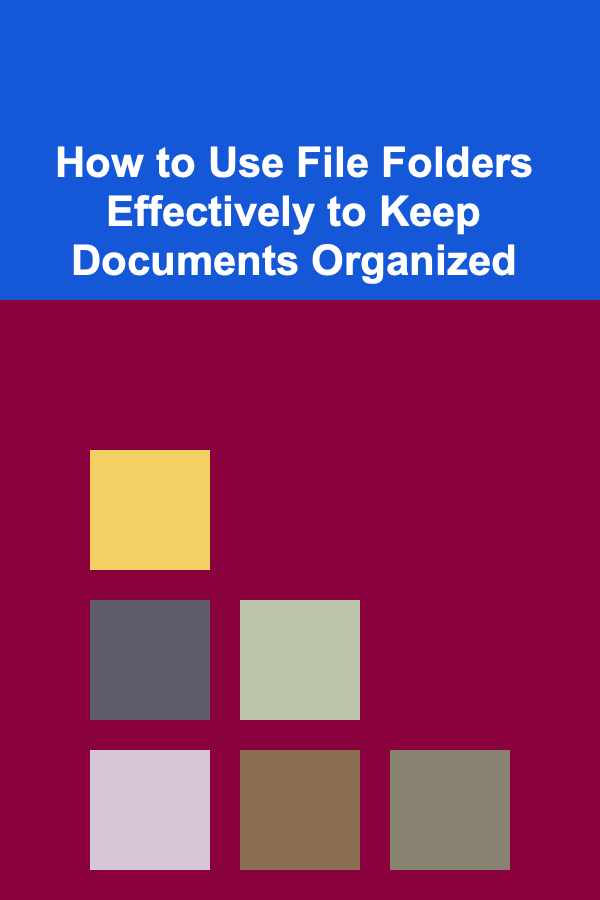
Start Here: How to Start a Blog
ebook include PDF & Audio bundle (Micro Guide)
$12.99$11.99
Limited Time Offer! Order within the next:

Blogging has evolved from a hobby to a business venture for many individuals and organizations. It's an incredibly accessible way to share your thoughts, ideas, and expertise with the world while potentially creating income streams. Whether you're aiming to share your passion, build an audience, or monetize your content, starting a blog is a worthwhile endeavor.
In this actionable guide, we'll dive deep into the essential steps for starting a successful blog, from choosing your niche to optimizing your posts for search engines, and everything in between.
Why You Should Start a Blog
Blogging offers several benefits, both personal and professional. Here are a few key reasons why you should start a blog:
- Creative Outlet: Blogging allows you to share your voice, ideas, and expertise in a format that is entirely your own. It's a great way to express your thoughts and passions with the world.
- Building an Audience: A blog gives you the opportunity to grow a dedicated following. As you share valuable content, readers will come back for more, potentially turning into long-term followers, customers, or clients.
- Monetization Opportunities: Over time, blogging can open up several monetization channels, such as affiliate marketing, sponsored posts, and ad revenue.
- SEO and Online Presence: Regularly updated blogs help your website rank higher in search engines. This gives you more visibility, which can translate into more traffic and potential business opportunities.
Choosing Your Blog Niche
Before you jump into the technical aspects of setting up a blog, it's crucial to decide on your niche. Your niche will determine your target audience and the type of content you create. A clear, defined niche will help attract the right people to your blog and keep them engaged.
Tips for Choosing a Niche:
- Passion and Expertise: Pick a topic you are passionate about or have deep knowledge in. Passion makes content creation more enjoyable, and expertise builds credibility.
- Target Audience: Understand who you want to reach. Are they hobbyists, professionals, or consumers? Tailor your content to their interests and needs.
- Market Demand: Make sure there is enough interest in your chosen niche. Do some research to see if people are actively searching for the topics you're considering.
- Monetization Potential: While it's important to choose a niche that excites you, also consider its potential for generating income. Some niches offer more monetization opportunities than others.
Common blog niches include:
- Personal finance
- Health and fitness
- Travel
- Technology
- Lifestyle
- Food and recipes
- Parenting
- Entrepreneurship
Choosing the Right Blogging Platform
The next step is selecting the right platform for your blog. The platform you choose will shape the way you design and manage your site, as well as how easy it is for you to publish and maintain content.
Popular Blogging Platforms:
- WordPress.org (Self-hosted): This is the most popular platform for serious bloggers and offers total control over your website. You'll need to get your own hosting and domain name, but it provides maximum flexibility.
- WordPress.com: A hosted version of WordPress that simplifies setup but comes with limitations on customization. Great for beginners, but less flexible in the long run.
- Blogger: A free, easy-to-use blogging platform owned by Google. While it's great for beginners, it has fewer features and customization options compared to other platforms.
- Medium: This is a content-focused platform that handles all the technical aspects of blogging for you. It's great for writers but lacks monetization and branding flexibility.
- Wix or Squarespace: These website builders provide user-friendly drag-and-drop interfaces, making it easy to create a beautiful blog. However, they may not offer the same level of control as WordPress.
Why WordPress.org is a Great Choice:
- Flexibility: Full control over the design and functionality of your blog.
- Plugins: Access to thousands of plugins to extend your blog's functionality.
- Scalability: As your blog grows, WordPress can easily accommodate more features and traffic.
Setting Up Your Blog: Domain, Hosting, and Design
Once you've chosen a blogging platform, it's time to set up your blog. Here are the essential steps:
1. Choose a Domain Name
Your domain name is the web address where visitors will find your blog (e.g., www.yourblog.com). A great domain name should be:
- Short and memorable
- Easy to spell and pronounce
- Relevant to your niche
- Unique and brandable
You can purchase a domain name from registrars like GoDaddy, Namecheap, or through your hosting provider.
2. Select a Hosting Provider
Web hosting is where your blog's data and content are stored. If you're using WordPress.org, you'll need to choose a hosting provider. Popular options include:
- Bluehost: Known for its great customer support and WordPress integration.
- SiteGround: Offers fast performance and excellent customer service.
- HostGator: A budget-friendly option with reliable uptime.
3. Install WordPress
Once you've purchased a domain and hosting plan, most hosting providers offer one-click WordPress installation, making it easy to get started.
4. Pick a Theme
A theme dictates the appearance of your blog. WordPress offers both free and premium themes. When selecting a theme:
- Choose one that fits your niche and style.
- Ensure it's responsive (mobile-friendly).
- Look for a theme that loads quickly, as speed is crucial for user experience and SEO.
Creating Quality Content
The backbone of any successful blog is its content. You must focus on creating valuable, engaging content that resonates with your target audience.
1. Start with Pillar Content
Your blog should feature pillar content---comprehensive, evergreen articles that serve as foundational pieces for your site. These pieces should answer critical questions your audience has and remain relevant over time.
For example:
- A travel blog might have a pillar post like "The Ultimate Guide to Budget Travel."
- A finance blog could feature "How to Create a Budget: A Step-by-Step Guide."
2. Create Consistent, High-Quality Posts
Consistency is key when blogging. Post regularly to keep your audience engaged and improve your search engine rankings. Aim for at least one post per week, especially when you're starting.
Your posts should be:
- Engaging: Capture your reader's attention in the first few lines.
- Well-structured: Break up your content with headings, bullet points, and images.
- SEO-optimized: Use relevant keywords, internal and external links, and proper meta descriptions to make your content more discoverable.
3. Use Visuals
Include images, infographics, and videos to supplement your written content. Visual content makes your blog more engaging and can help clarify complex topics.
Driving Traffic to Your Blog
Creating great content is only part of the equation. You need to drive traffic to your blog so that people can read and share your posts. Here are a few strategies to increase your blog's visibility:
1. Search Engine Optimization (SEO)
SEO involves optimizing your content to rank higher in search engine results, making it easier for people to find your blog. Key SEO practices include:
- Keyword research: Identify the words and phrases people are searching for in your niche.
- On-page SEO: Optimize your blog posts by including keywords in your title, meta description, and throughout your content.
- Backlinks: Encourage other reputable sites to link back to your content, which can improve your SEO ranking.
2. Social Media Marketing
Promote your blog on platforms like Instagram, Facebook, Twitter, and Pinterest. Share snippets of your blog posts, create engaging visuals, and interact with your audience to drive traffic.
3. Email Marketing
Building an email list is crucial for long-term success. Encourage visitors to subscribe to your blog to receive updates and newsletters. Offer a lead magnet, such as a free eBook or checklist, to incentivize sign-ups.
4. Collaborations and Guest Posts
Guest posting on other blogs in your niche can help you reach a wider audience. By writing a valuable guest post and linking back to your blog, you can attract new readers.
Monetizing Your Blog
Once you've built a solid foundation and an engaged audience, you can start monetizing your blog. Here are some common ways to earn money:
1. Affiliate Marketing
Promote products or services related to your niche and earn commissions when your readers make a purchase through your affiliate links.
2. Sponsored Posts
Brands in your niche may pay you to write content about their products or services. Sponsored posts can be a lucrative way to monetize a successful blog.
3. Advertising
You can run ads on your blog through networks like Google AdSense. The more traffic you get, the more money you can make from ads.
4. Selling Products or Services
If you have a product or service to offer, your blog can be a powerful platform to sell. This could include digital products like eBooks or courses, or even physical products if it fits your niche.
Conclusion
Starting a blog is an exciting journey that requires planning, commitment, and creativity. By choosing a niche you're passionate about, setting up a solid blog foundation, creating high-quality content, and using effective marketing strategies, you can build a blog that attracts readers and generates income. Stay consistent, keep learning, and enjoy the process!

How to Keep Fishing Gear Safe from Rust and Corrosion
Read More
How to Make Money While Traveling the World
Read More
How to Manage Stress and Maintain Well-being While Learning Remotely
Read More
How to Save Money on Grocery Shopping Each Month
Read More
How to Use File Folders Effectively to Keep Documents Organized
Read More
How To Understand the Brain's Role in Dreams
Read MoreOther Products

How to Keep Fishing Gear Safe from Rust and Corrosion
Read More
How to Make Money While Traveling the World
Read More
How to Manage Stress and Maintain Well-being While Learning Remotely
Read More
How to Save Money on Grocery Shopping Each Month
Read More
How to Use File Folders Effectively to Keep Documents Organized
Read More